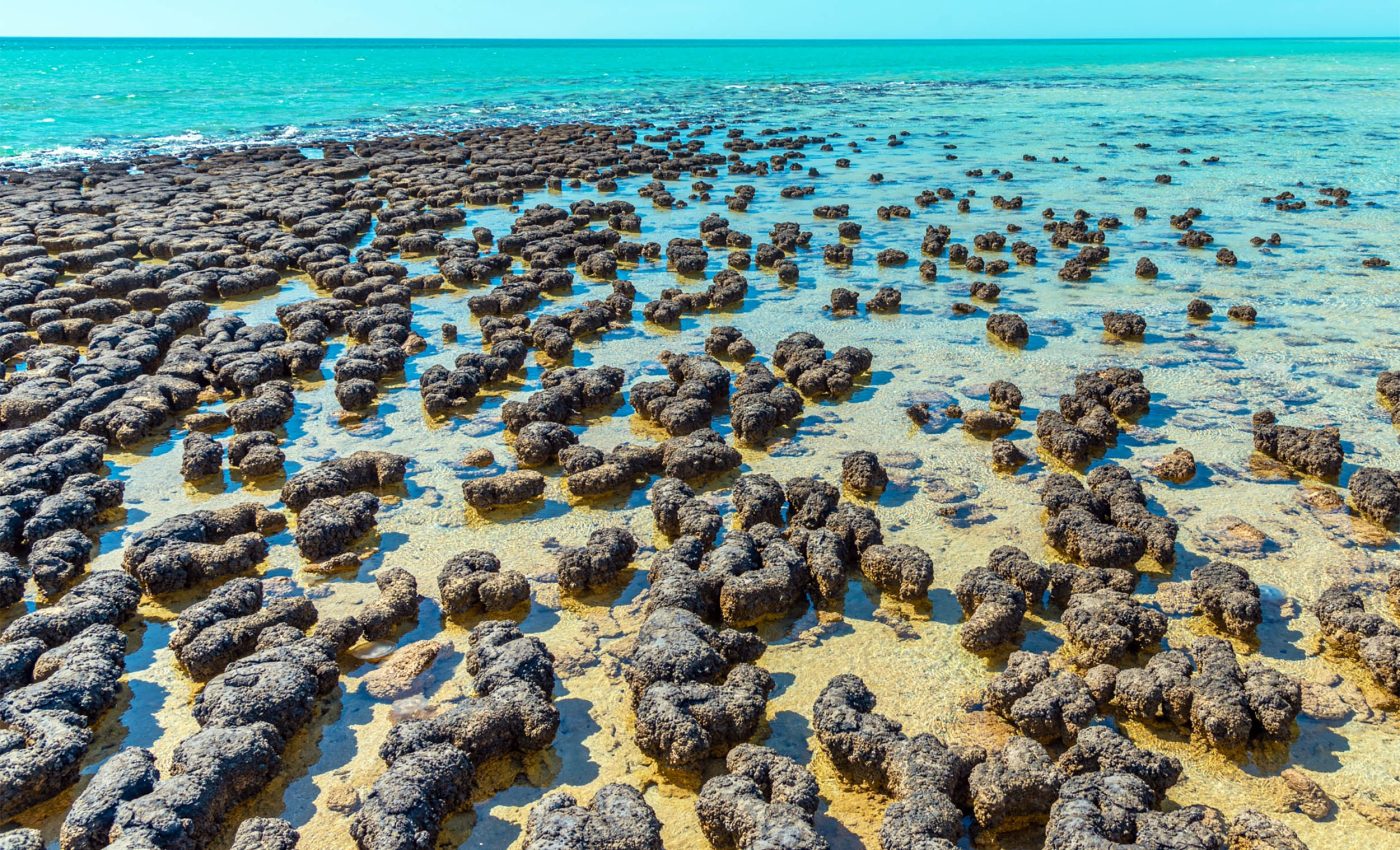
Strange microbial bedfellows offer clues to how complex life evolved
Slimy layered microbial mats in Shark Bay are more than seaside oddities. They are living laboratories where bacteria and archaea still work side by side, much as they may have done long ago.
A new co-culture from these mats shows a bacterium and an archaeon physically connecting through tiny tubes while trading metabolites in ways that make both partners tick. That kind of teamwork fits neatly with ideas about how complex cells arose.
Brendan P. Burns at the University of New South Wales (UNSW) led the study with colleagues including Iain G. Duggin at the University of Technology Sydney.
Shark Bay microbes survive extremes
Shark Bay, Western Australia, holds thriving stromatolites, the rock-like piles that grow when layered microbial communities trap and bind sediments in harsh, salty water.
In Malgana language, Shark Bay is called Gathaagudu, which means two waters, a name still used by Traditional Owners and regional agencies.
The southern basin can be roughly twice as salty as the open ocean, and the mats ride out heat, desiccation, and intense UV under those conditions.
Modern mats are not time capsules, but they are useful stand-ins for ancient ecosystems where microbes built layered structures and forged partnerships that shaped the planet.
Microbial mat microbes team up
Back in the lab, researchers enriched a two-member community from those mats: the bacterium Stromatodesulfovibrio nilemahensis and a newly named Asgard archaeon, Nerearchaeum marumarumayae.
Asgard archaea are widely viewed as the closest known prokaryotic relatives of eukaryotes, the lineage that includes animals, plants, and fungi.
The team sequenced both genomes and grew the partners under high-salt, low-oxygen settings that fit the mats’ tough environment.
Each partner seems to cover what the other lacks, a classic sign of syntrophy, where two microbes share metabolic tasks to make life work.
Genes show nutrient sharing
Genome analysis indicates the archaeon releases hydrogen, acetate, formate, and sulfite, while the bacterium supplies amino acids and vitamins that the archaeon needs.
These characteristics and interactions may represent an early step in the symbiotic evolution of eukaryotic cells.
That statement does not claim a perfect replay of early evolution. It argues that the features they see line up with long-standing models that link archaeal hydrogen producers and bacterial sulfate reducers to the rise of complex cells.
Those models gained traction after the first enrichment and later formal isolation of an Asgard archaeon, Prometheoarchaeum syntrophicum, a slow-growing anaerobe that depends on partner microbes.
Microbial mat shows nanotube connections
With cryotomography, the researchers observed chains of budded vesicles attached to the archaeal cell by extracellular fibers, plus internal tube and cage-like elements inside the archaeon.
They also saw intercellular nanotubes apparently assembled by the bacterium that contact the archaeal surface, hinting at direct physical links during resource sharing.
Archaea in other systems build similar connections, and a 2024 study reported nanotubes in a co-culture that bridged cytoplasms and appeared to serve as conduits for molecular exchange.
That study counted an average of 4.4 nanotubes per host-symbiont contact, showing how dense and structured these links can become under the microscope.
Hints at complex cells
If partners swap metabolites through persistent contacts, selection can push them toward tighter dependence.
That is the kind of ratchet some researchers think nudged early archaea and bacteria toward the cell-in-cell arrangement that defines eukaryotes.
The new Shark Bay culture does not show one cell engulfing the other. It does, however, put plausible building blocks on the table: complementing metabolisms, physical tethers, and vesicle traffic that could knit cells into a more integrated unit over time.
That interpretation sits alongside earlier work that first enriched and then formally described Prometheoarchaeum, strengthening the case that Asgard lineages sit near the root of eukaryotic features.
More broadly, archaeal communities are known to trade vesicles and tube-like structures, which can shuttle proteins, lipids, and genetic material and may help build cooperative networks in extreme habitats.
Next steps in research
First, replication matters. Independent teams will want to reproduce the nanotube contacts and metabolite exchanges and test whether those tubes move specific molecules in real time, not just correlate with growth.
Second, comparative context helps. Asgard cultures and co-cultures are slowly expanding, and every new system gives biologists another angle on the relationship between archaeal cell biology and eukaryotic traits.
Finally, place still matters. Shark Bay’s mats are rugged, hypersaline, sunlit, and dynamic, a mix of stresses that can reward tight microbial alliances and keep them around across seasons and storms.
The study is published in bioRxiv.
—–
Like what you read? Subscribe to our newsletter for engaging articles, exclusive content, and the latest updates.
Check us out on EarthSnap, a free app brought to you by Eric Ralls and Earth.com.
—–













